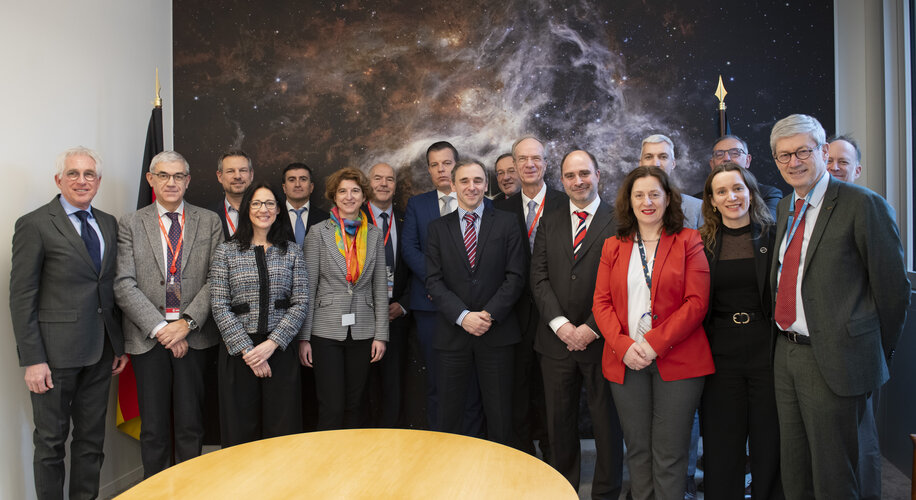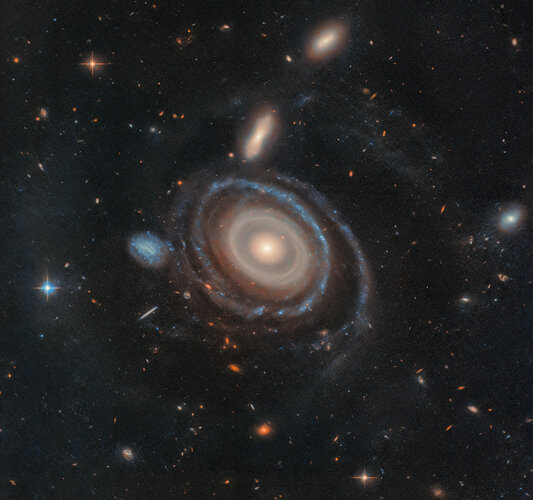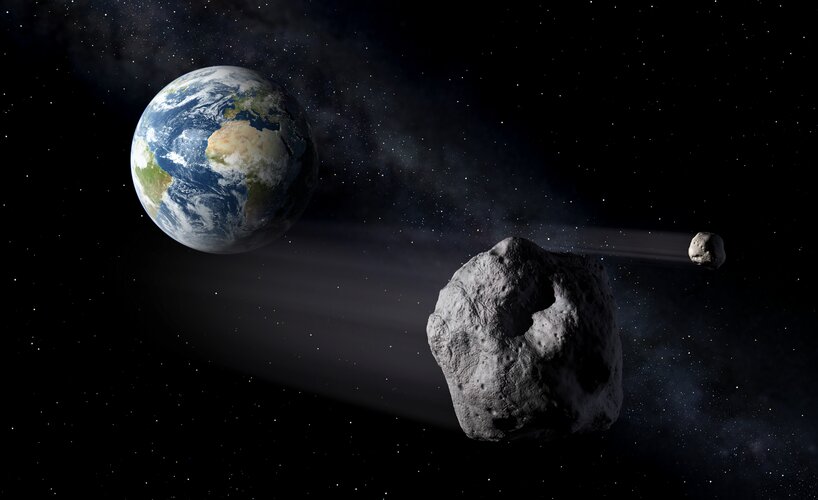Reusable Rocket Development Advances in China
Sunday, 09 February 2025 09:55 China's commercial reusable rocket industry is making significant strides, driven by increasing demand from major satellite internet constellations such as Guowang and Spacesail, which plan to deploy tens of thousands of satellites into low Earth orbit. This demand is pushing forward advancements in rocket technology, materials, and testing processes.
Meng Xianbo, chief strategy officer at
China's commercial reusable rocket industry is making significant strides, driven by increasing demand from major satellite internet constellations such as Guowang and Spacesail, which plan to deploy tens of thousands of satellites into low Earth orbit. This demand is pushing forward advancements in rocket technology, materials, and testing processes.
Meng Xianbo, chief strategy officer at SpaceX launches 21 more Starlink satellites from Florida
Sunday, 09 February 2025 09:55 SpaceX on Saturday launched 21 more Starlink satellites from Cape Canaveral Space Force Station into lower Earth orbit on a sunny afternoon after the private company's plans to fly Friday were scrubbed.
The Falcon 9 rocket lifted off from pad 30 at 2:18 p.m. Following stage separation, the first stage landed on the A Shortfall of Gravitas droneship, which is stationed in the Atlantic Oc
SpaceX on Saturday launched 21 more Starlink satellites from Cape Canaveral Space Force Station into lower Earth orbit on a sunny afternoon after the private company's plans to fly Friday were scrubbed.
The Falcon 9 rocket lifted off from pad 30 at 2:18 p.m. Following stage separation, the first stage landed on the A Shortfall of Gravitas droneship, which is stationed in the Atlantic Oc Scientists analyze asteroid collision impact on climate and ecosystems
Sunday, 09 February 2025 09:55 A new study led by the IBS Center for Climate Physics (ICCP) at Pusan National University, South Korea, explores the potential consequences of a medium-sized (~500 m) asteroid impact on Earth's climate and ecosystems. Published in Science Advances, the research presents detailed simulations that examine atmospheric and biospheric reactions to such a colli
A new study led by the IBS Center for Climate Physics (ICCP) at Pusan National University, South Korea, explores the potential consequences of a medium-sized (~500 m) asteroid impact on Earth's climate and ecosystems. Published in Science Advances, the research presents detailed simulations that examine atmospheric and biospheric reactions to such a colli How Early Earth Supported the Formation of Polyester Protocells
Sunday, 09 February 2025 09:55 A leading hypothesis about the origins of life suggests that simple chemical compounds gradually evolved into complex structures, ultimately giving rise to protocells-primitive precursors to living cells.
A new study conducted by the Earth-Life Science Institute (ELSI) at the Institute of Science Tokyo expands our understanding of one such candidate for protocells: polyester microdroplets.
A leading hypothesis about the origins of life suggests that simple chemical compounds gradually evolved into complex structures, ultimately giving rise to protocells-primitive precursors to living cells.
A new study conducted by the Earth-Life Science Institute (ELSI) at the Institute of Science Tokyo expands our understanding of one such candidate for protocells: polyester microdroplets. Researchers find largest black hole jet from early universe
Sunday, 09 February 2025 09:55 Researchers said on Thursday that they had discovered twin-lobed radio jets they suspect were formed when the universe was 1.2 billion years old, stretching at least twice the length of the Milky Way galaxy.
Scientists added, however, that the black hole fueling the quasar producing the jets is small compared to other black holes, equaling 450 million suns. The discovery was made by the
Researchers said on Thursday that they had discovered twin-lobed radio jets they suspect were formed when the universe was 1.2 billion years old, stretching at least twice the length of the Milky Way galaxy.
Scientists added, however, that the black hole fueling the quasar producing the jets is small compared to other black holes, equaling 450 million suns. The discovery was made by the By studying neutron 'starquakes', scientists aim to revolutionize nuclear matter research
Sunday, 09 February 2025 09:55 A new study led by the University of Bath suggests that investigating 'starquakes'-seismic activity in neutron stars-could unlock profound insights into the properties of nuclear matter. These findings have the potential to reshape current methodologies in nuclear physics and astronomy, with possible long-term applications in health, security, and energy.
The research, conducted by an inte
A new study led by the University of Bath suggests that investigating 'starquakes'-seismic activity in neutron stars-could unlock profound insights into the properties of nuclear matter. These findings have the potential to reshape current methodologies in nuclear physics and astronomy, with possible long-term applications in health, security, and energy.
The research, conducted by an inte Lightning strikes link weather on Earth and weather in space
Sunday, 09 February 2025 09:55 There are trillions of charged particles - protons and electrons, the basic building blocks of matter - whizzing around above your head at any given time. These high-energy particles, which can travel at close to the speed of light, typically remain thousands of kilometers away from Earth, trapped there by the shape of Earth's magnetic field.
Occasionally, though, an event happens that can
There are trillions of charged particles - protons and electrons, the basic building blocks of matter - whizzing around above your head at any given time. These high-energy particles, which can travel at close to the speed of light, typically remain thousands of kilometers away from Earth, trapped there by the shape of Earth's magnetic field.
Occasionally, though, an event happens that can NASA CubeSat Finds New Radiation Belts After May 2024 Solar Storm
Sunday, 09 February 2025 09:55 The discovery of the new belts, made possible by NASA's Colorado Inner Radiation Belt Experiment (CIRBE) satellite and published Feb. 6, 2025, in the Journal of Geophysical Research: Space Physics, is particularly important for protecting spacecraft launching into geostationary orbits, since they travel through the Van Allen Belts several times before reaching their final orbit.
Temporary
The discovery of the new belts, made possible by NASA's Colorado Inner Radiation Belt Experiment (CIRBE) satellite and published Feb. 6, 2025, in the Journal of Geophysical Research: Space Physics, is particularly important for protecting spacecraft launching into geostationary orbits, since they travel through the Van Allen Belts several times before reaching their final orbit.
Temporary One in Four Chance Annually of Rocket Debris Entering High-Traffic Airspace
Sunday, 09 February 2025 09:55 A new study from the University of British Columbia (UBC) has found that there is a 26 percent chance each year that debris from space rockets will re-enter Earth's atmosphere and pass through an area of high air traffic density.
Although the probability of such debris striking an aircraft remains low, the findings underscore the growing risk of space junk disrupting flights and imposing f
A new study from the University of British Columbia (UBC) has found that there is a 26 percent chance each year that debris from space rockets will re-enter Earth's atmosphere and pass through an area of high air traffic density.
Although the probability of such debris striking an aircraft remains low, the findings underscore the growing risk of space junk disrupting flights and imposing f Call for information on low Earth orbit navigation
Friday, 07 February 2025 14:39
The European Space Agency (ESA) is issuing a Request for Information (RFI) via OSIP for European industry to show interest and provide information on satellite technology that could enable the proposed next phase of ESA's LEO-PNT (Low Earth Orbit Positioning Navigation and Timing) programme, focused on industrialisation and in-orbit validation. ESA is looking to learn about production capability of payload building blocks and suitable off-the-shelf satellite platforms to accommodate them.
ESA to develop optical technology for navigation
Friday, 07 February 2025 14:29
Optical technology has the potential to revolutionise the field of positioning, navigation and timing. To drive the development of this technology, ESA has signed a contract with a consortium of European companies that will conduct a definition study (Phase A/B1) and associated critical technology predevelopment.
This is the first step toward a potential in-orbit demonstrator for optical time synchronisation and ranging (OpSTAR) that will be proposed at the ESA Council at Ministerial Level in November 2025, to validate intersatellite optical links before future use in operational satellite navigation systems.
Space weather station
Friday, 07 February 2025 13:20 Video:
00:00:46
Video:
00:00:46
Over the course of a whole day, Norway’s plasma sampler, the multi-Needle Langmuir Probe (m-NLP), is seen being slowly moved around by a robotic arm to be slotted into place on the outside porch of Bartolomeo – the Airbus-operated platform attached to the Columbus laboratory of the International Space Station (ISS).
Since its integration on Bartolomeo in September 2023, the task of this instrument has been to sample its immediate space weather environment by measuring the plasma surrounding the ISS. It does so to an extraordinarily high level of detail, making a few thousand measurements per second.
Plasma, sometimes
Week in images: 03-07 February 2025
Friday, 07 February 2025 13:10
Week in images: 03-07 February 2025
Discover our week through the lens
Earth from Space: Snow-capped Swiss Alps
Friday, 07 February 2025 08:00 Image:
The ranges and valleys of the Swiss Alps stand out in this image captured by the Copernicus Sentinel-2 mission in December 2024.
Image:
The ranges and valleys of the Swiss Alps stand out in this image captured by the Copernicus Sentinel-2 mission in December 2024. ESA endorses Year of Asteroid Awareness and Planetary Defence
Friday, 07 February 2025 08:00
The European Space Agency (ESA) has endorsed the United Nations' (UN) designation of 2029 as the International Year of Asteroid Awareness and Planetary Defence.
The initiative will foster international collaboration in the field of planetary defence and educate the public on the risks and opportunities associated with near-Earth asteroids.
